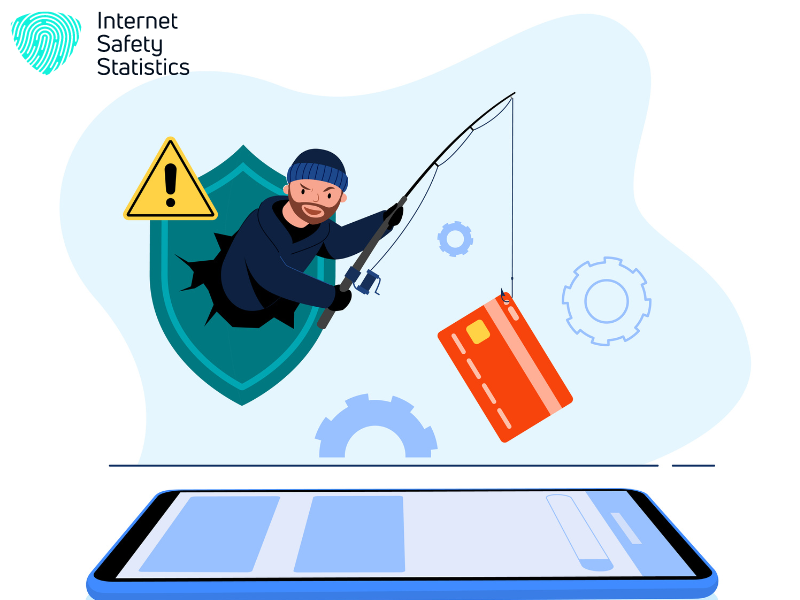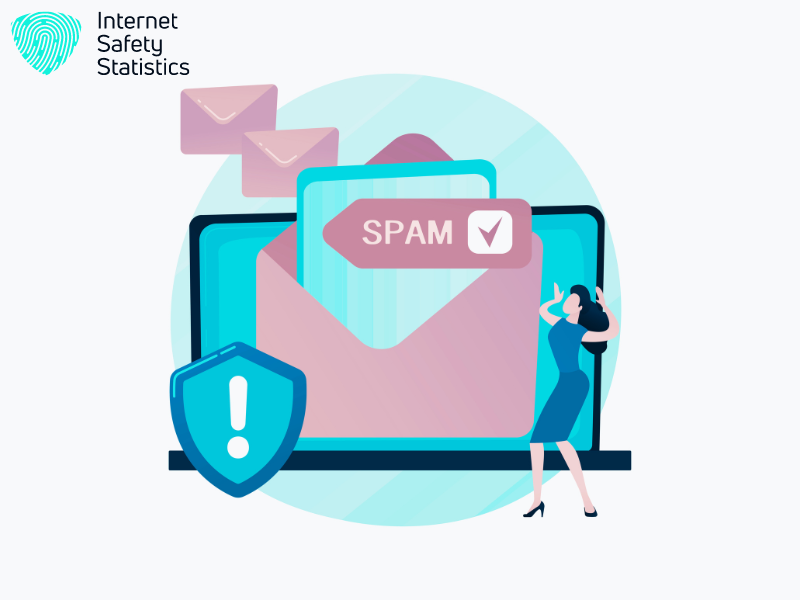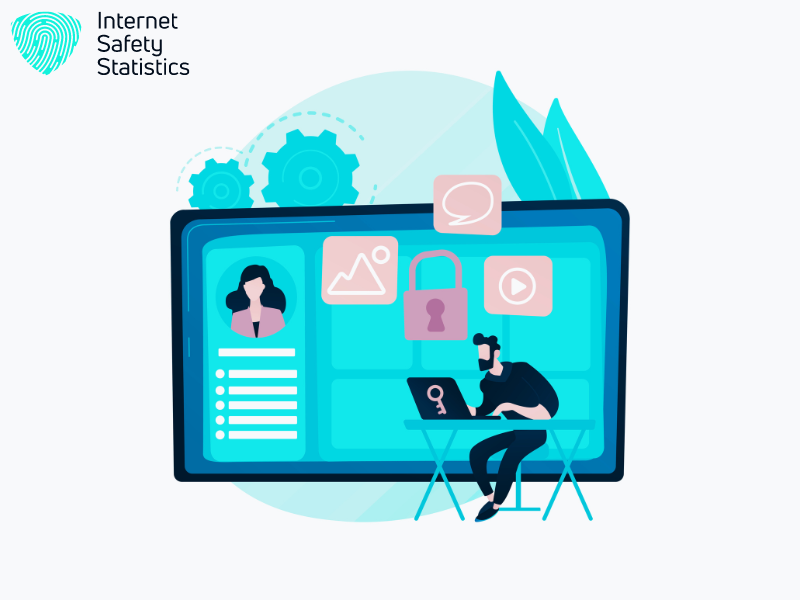
In the online world, people often face three common cyber threats: Phishing, Spamming, and Cyberstalking. These dangers vary in how much harm they can cause, from minor annoyances to serious breaches of privacy and even psychological harm in the case of Phishing and Cyberstalking. To protect against these threats, it’s important to understand them—just like how you would study your enemy, you have to know the differences between each one and how to deal with them effectively.
Phishing, Spamming, and Cyberstalking are distinct but related dangers in the digital realm. Learning about their unique characteristics helps users strengthen their defences and navigate the internet more safely. By understanding how Phishing, Spamming, and Cyberstalking work, individuals can better protect themselves against these threats.
Phishing

Phishing is the act of acquiring private information such as usernames, passwords, and banking information by posing as a legitimate entity or a trustworthy person or organisation. The term “phishing” is a play on the word “fishing,” as perpetrators cast out digital bait in the hope of hooking unsuspecting victims.
Common Tactics Used by Phishers
While the most common phishing attacks are carried out by electronic messages such as emails and instant messages, more malicious and deceptive methods are practised by online criminals that are much harder to see through.
Email Spoofing
Phishers often spoof email addresses to make their messages appear as if they’re coming from legitimate sources, such as banks, government agencies, or reputable companies.
Urgency and Fear
Phishing emails frequently create a sense of urgency or fear to compel recipients to act quickly without thinking critically. They may threaten account suspension, fines, or legal action if immediate action isn’t taken.
Fake Websites
Phishers create counterfeit websites that closely resemble legitimate ones, tricking users into entering their login credentials or personal information.
Social Engineering
Phishers exploit psychological manipulation techniques to trick individuals into revealing sensitive information or performing actions that compromise their security.
Characteristics of Phishing
Phishing exhibits several distinctive characteristics that distinguish it from other forms of cybercrime. Understanding these features is crucial for identifying and mitigating phishing attacks effectively.
Deceptive Impersonation
Phishing attempts often involve impersonation of trusted entities, such as banks, government agencies, or well-known companies. Attackers mimic the branding and communication styles of these entities to gain victims’ trust.
Social Engineering Tactics
Phishers exploit psychological manipulation techniques to manipulate individuals into divulging sensitive information or performing actions that compromise their security. They leverage emotions like fear, curiosity, or urgency to prompt immediate responses.
Spoofed Communication Channels
Phishing attacks can occur through various communication channels, including email, text messages (SMS), social media platforms, and phone calls. Attackers utilise these channels to reach a wide audience and increase the likelihood of success.
Sense of Urgency
Phishing messages often convey a sense of urgency or importance, compelling recipients to take immediate action. Threats of account suspension, impending fines, or security breaches coerce victims into responding hastily without verifying the legitimacy of the communication.
Use of Malicious Links and Attachments
Phishing emails frequently contain malicious links or attachments designed to redirect users to fraudulent websites or initiate downloads of malware onto their devices. These links and attachments may appear legitimate but harbour harmful payloads.
Sophisticated Techniques
Phishing attacks are becoming increasingly sophisticated, incorporating advanced tactics such as spear phishing and whaling. Spear phishing targets specific individuals or organisations, tailoring messages to exploit personal information or organisational relationships.
Exploitation of Trust and Familiarity
Phishers exploit human tendencies to trust and comply with familiar or authoritative figures. By impersonating trusted sources or referencing familiar contexts, attackers increase the likelihood of recipients falling for their schemes.
Constant Evolution
Phishing techniques continuously evolve to bypass security measures and exploit emerging vulnerabilities. Attackers adapt their strategies in response to advancements in cybersecurity defences and changes in technology and user behaviour.
How to Deal with Phishing Attacks
The first and most crucial step in dealing with phishing attacks is being vigilant, paying close attention to the website you are on, verifying the identity of the person sending you a suspicious email and, in the case of online banking information, making sure that you are indeed using your bank’s website.
The second line of defence is anti-phishing filters, which are available in most, if not all, online security suites. But like all online security measures, they are not perfect, and you still shouldn’t let your guard down. Even if you had one installed and running, they would detect and prevent most of the attacks, but most are still not all.
Here are practical steps individuals and organisations can take to effectively respond to phishing attacks:
- Recognise Phishing Attempts
- Verify Sender Authenticity
- Exercise Caution with Attachments and Links
- Implement Email Security Measures
- Use Multi-Factor Authentication (MFA)
- Report Suspected Phishing Attempts
- Monitor Account Activity
- Educate and Train Users
- Deploy Security Solutions
- Stay Informed and Updated
Spamming

Spamming is the use of electronic messages to send unsolicited bulk messages, in most cases advertising for products indiscriminately. It is the most widespread form of attack on online privacy, with a study in 2011 estimating the number of spam messages sent in a year amounted to nearly 7 trillion messages.
Characteristics of Spamming
Spamming is characterised by several distinct features that differentiate it from legitimate communication practices. These characteristics include:
Unsolicited Nature
Spam messages are typically sent without the recipient’s explicit consent or request. They arrive in users’ inboxes or other communication channels without prior interaction or engagement.
Bulk Distribution
Spamming involves the dissemination of messages to a large number of recipients simultaneously. Spammers rely on mass distribution to maximise the reach of their messages and increase the likelihood of engagement.
Commercial or Malicious Intent
The primary purpose of spam messages is often commercial, aiming to promote products, services, or offers. However, spamming can also involve malicious activities such as phishing attempts, malware distribution, or fraudulent schemes.
Deceptive Practices
Spammers often employ deceptive tactics to elude spam filters and deceive recipients. This may include misleading subject lines, falsified sender information, or disguising the true purpose of the message.
Lack of Targeting or Personalisation
Spam messages typically lack personalisation and are not tailored to individual recipients. Instead, they exhibit generic content designed to appeal to a broad audience.
Persistence and Frequency
Spamming campaigns can be persistent and recurring, with spammers sending multiple messages over time to the same recipients. This relentless approach increases the likelihood of recipients encountering and engaging with the spam content.
Variety of Forms
Spamming manifests across various communication channels, including email, social media, instant messaging, forums, and text messages. Spammers adapt their tactics to exploit vulnerabilities and reach users through multiple platforms.
Violation of Terms of Service
Spamming often violates the terms of service or acceptable use policies of communication platforms and service providers. Sending unsolicited messages or engaging in abusive behaviour can lead to account suspension, blacklisting, or legal consequences.
Negative Impact on User Experience
Spamming disrupts users’ communication channels, inundating them with unwanted or irrelevant messages. This can lead to frustration, inconvenience, and a diminished user experience.
Legal and Regulatory Implications
Spamming may contravene laws and regulations governing electronic communications, privacy, and consumer protection. Governments and regulatory bodies impose penalties and sanctions on individuals and organisations found guilty of spamming practices.
Strategies for Reducing Exposure to Spam
Reducing exposure to spam requires a combination of proactive measures and vigilant practices. Here are several effective strategies individuals and organisations can implement to mitigate the risk of encountering spam:
Using Spam Filters
Enabling and regularly updating spam filters provided by email service providers or third-party software solutions is crucial. These filters automatically detect and divert suspected spam messages away from your primary inbox, reducing clutter and minimising the risk of falling victim to phishing scams or malware distribution.
Being Cautious with Email Addresses
Avoid displaying email addresses in public forums, websites, or social media platforms where they can be harvested by spammers. Consider using disposable email addresses or aliases for online registrations and subscriptions to mitigate the risk of exposure to spam.
Opting out of Mailing Lists
Unsubscribe from mailing lists, newsletters, and marketing communications that send unwanted emails. Legitimate emails typically include an opt-out option at the bottom of the message, allowing recipients to remove themselves from future communications and reducing inbox clutter.
Using Disposable Email Addresses
Consider using disposable email addresses or temporary aliases for online interactions with unfamiliar websites or services. Disposable addresses help prevent spam from reaching primary email accounts, preserving the integrity of your inbox and reducing clutter.
Avoiding Clicking on Suspicious Links
Exercise caution when clicking on links embedded in emails, especially from unknown or suspicious senders. Hover over links to preview URLs and verify their legitimacy before clicking to avoid falling victim to phishing scams or malware distribution.
Implementing Email Authentication Protocols
Implement email authentication protocols such as SPF, DKIM, and DMARC to validate the authenticity of email senders and prevent domain spoofing. These protocols add layers of security to your email communications, reducing the likelihood of receiving spoofed or fraudulent messages.
Incorporating Captcha Verification
Incorporate Captcha Verification mechanisms into online forms and registration processes to deter automated bots and prevent spam submissions. Captchas help differentiate between human users and bots, reducing the volume of spam submissions received through web forms and contact pages.
Reporting and Blocking Spam
Report and block spam emails to your email service provider or relevant authorities using built-in reporting tools or designated spam reporting addresses. Additionally, utilise email client features to block or filter specific senders, domains, or keywords associated with spam messages.
Educating Users
Educate users about common spamming tactics, phishing scams, and best practices for identifying and responding to suspicious emails. Providing training sessions or awareness programs can help users recognise the signs of spam and avoid falling victim to malicious activities.
Keeping Software Updated
Regularly update email clients, spam filters, and antivirus software with the latest patches and security enhancements. This ensures optimal protection against evolving spamming techniques and malware threats, reducing the risk of spam-related security incidents.
Cyberstalking

Cyberstalking involves the persistent use of digital communication and technology to harass, intimidate, or monitor individuals, causing them distress, fear, or emotional harm. Here’s a breakdown of what constitutes cyberstalking, types of cyberstalking behaviours, impact on victims’ mental health, legal implications for cyberstalkers, and steps individuals can take to protect themselves:
What Constitutes Cyberstalking
Cyberstalking encompasses various forms of online harassment, surveillance, or unwanted contact, including:
- Persistent Communication: Repeatedly sending threatening, intimidating, or harassing messages via email, social media, or instant messaging platforms.
- Monitoring and Surveillance: Using technology to track, monitor, or gather information about an individual’s online activities, location, or personal life without their consent.
- Impersonation and Identity Theft: Creating fake profiles or impersonating the victim online to deceive, manipulate, or damage their reputation.
- Unwanted Contact: Making unsolicited phone calls, sending unwanted gifts, or showing up uninvited at the victim’s home or workplace.
Types of Cyberstalking Behaviours
- Harassment and Threats: Sending abusive, threatening, or derogatory messages to the victim, often with the intent to intimidate or instil fear.
- Online Surveillance: Monitoring the victim’s online activities, whereabouts, or social interactions without their knowledge or consent.
- Doxxing: Publishing or sharing the victim’s personal information, such as their address, phone number, or financial details, online without authorisation.
- Catfishing: Creating fake personas or profiles to establish deceptive relationships with the victim for malicious purposes.
Impact on Victims’ Mental Health and Well-Being
Cyberstalking can have severe psychological and emotional effects on victims, including:
- Anxiety and Fear: Victims may experience heightened levels of anxiety, fear, or paranoia due to the persistent threats and intimidation tactics used by cyberstalkers.
- Depression and Isolation: Long-term exposure to cyberstalking can lead to feelings of depression, social withdrawal, and isolation as victims struggle to cope with the ongoing harassment.
- Post-Traumatic Stress Disorder (PTSD): Victims of severe cyberstalking may develop symptoms of PTSD, including flashbacks, nightmares, and hypervigilance, as a result of the traumatic experiences endured.
- Impact on Daily Functioning: Cyberstalking can disrupt victims’ daily lives, relationships, and professional responsibilities, affecting their overall well-being and quality of life.
Legal Implications and Consequences for Cyberstalkers
Cyberstalking is a criminal offence punishable by law in many jurisdictions. Legal implications and consequences for cyberstalkers may include:
- Civil and Criminal Charges: Cyberstalkers may face civil lawsuits and criminal charges for harassment, intimidation, invasion of privacy, and other offences under relevant laws and statutes.
- Restraining Orders and Protective Measures: Courts may issue restraining orders or injunctions prohibiting cyberstalkers from contacting or harassing the victim and imposing other protective measures to ensure the victim’s safety.
- Fines and Penalties: Convicted cyberstalkers may be subject to fines, penalties, probation, or imprisonment depending on the severity of the offence and applicable legal provisions.
- Compensation and Restitution: Cyberstalkers may be required to pay restitution or compensate the victim for damages, emotional distress, or financial losses resulting from the cyberstalking incidents.
Steps Individuals Can Take to Protect Themselves from Cyberstalking
- Maintain Privacy Settings: Review and adjust privacy settings on social media accounts, email accounts, and other online platforms to limit access to personal information and control who can contact or interact with you.
- Use Strong Passwords: Create strong, unique passwords for online accounts and enable multi-factor authentication (MFA) wherever possible to enhance account security and prevent unauthorised access.
- Be Mindful of Online Sharing: Exercise caution when sharing personal information, photos, or location details online, and be selective about accepting friend requests or connections from unknown individuals.
- Document and Report Incidents: Keep records of cyberstalking incidents, including screenshots, emails, messages, and timestamps, and report them to relevant authorities, internet service providers, or law enforcement agencies for investigation and intervention.
- Seek Support and Assistance: Reach out to trusted friends, family members, or mental health professionals for emotional support, guidance, and assistance in navigating the challenges of cyberstalking and its impact on mental health and well-being.
- Consider Legal Options: Consult with legal experts or victim advocacy organisations to explore legal options, obtain protective orders, and pursue civil or criminal remedies against cyberstalkers in accordance with applicable laws and regulations.
Awareness and vigilance are pivotal in mitigating cyber threats, given the ever-evolving nature of digital risks and the vulnerability of users. Recognising the dynamic threat landscape and the human factor’s significance in cybersecurity, individuals must remain informed and vigilant to protect their online presence effectively. By staying educated on emerging threats, adhering to best practices, and exercising caution online, individuals can fortify their defences and minimise the risk of falling victim to cyber-attacks. Encouraging proactive measures and promoting a culture of cybersecurity awareness further reinforces collective efforts to foster a safer digital environment for all.
